

CarExpert.com.au
The CarExpert team's favourite cars of 2025
3 Days Ago
It's been a long time coming but there's finally a new Nissan Juke and we're one of the few markets outside Europe to get it. Was it worth the wait?
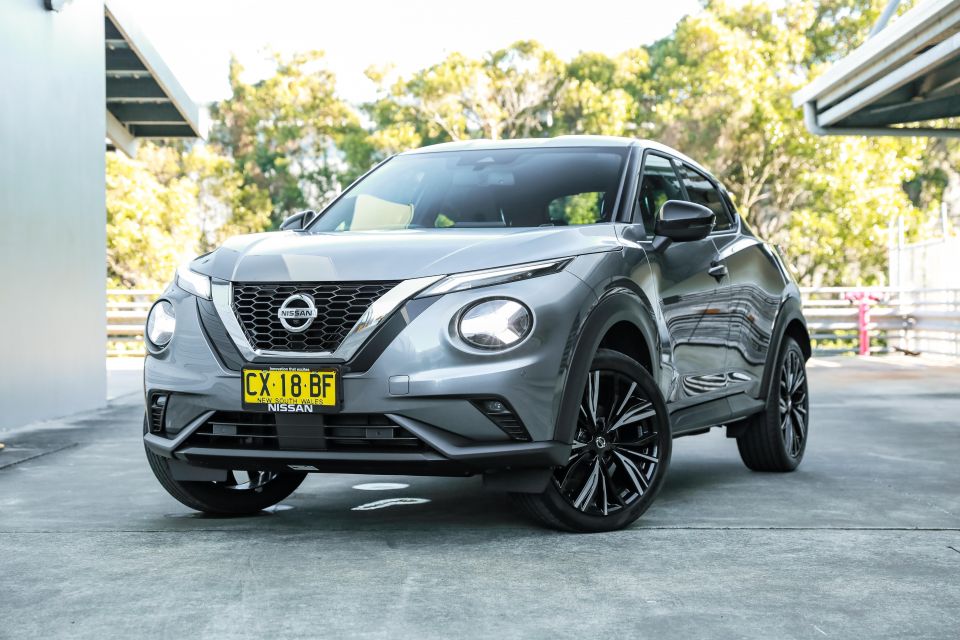
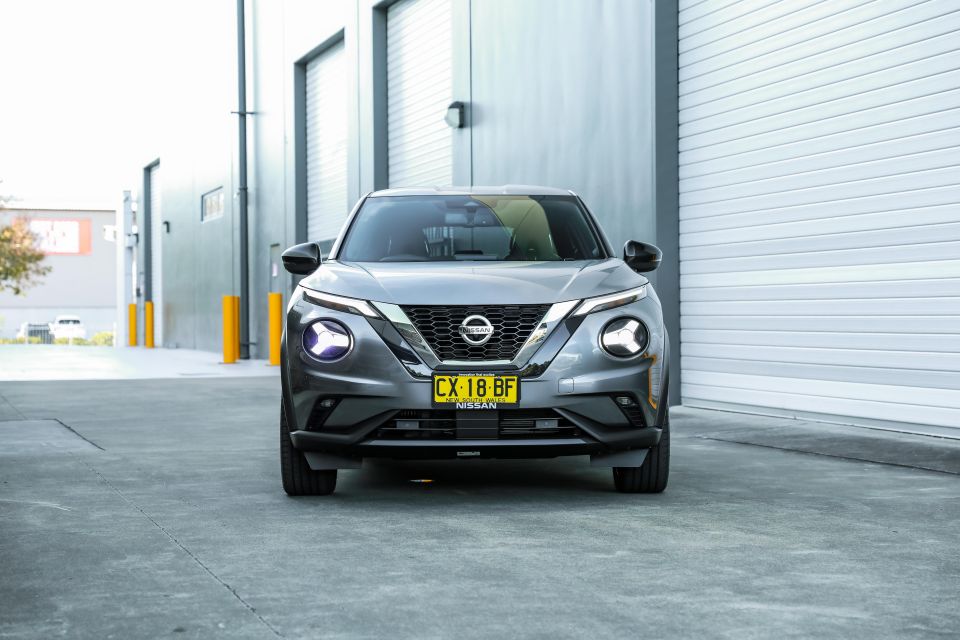

News Editor
New from
$36,490
excl. on-roads

News Editor
New from
$36,490
excl. on-roads


News Editor
New from
$36,490
excl. on-roads

News Editor
New from
$36,490
excl. on-roads
Quickly see how this car stacks up against its competition. Select any benchmark to see more details.
Where expert car reviews meet expert car buying – CarExpert gives you trusted advice, personalised service and real savings on your next new car.
Too often with small SUVs, the value equation simply doesn’t stack up when you compare them to the light cars on which they’re based. Unless you really want a higher hip point, they’re not worth the extra few thousand dollars.
It’s different for the Nissan Juke. Since Nissan did a mass cull of its mainstream passenger cars in 2017, the Juke has served as the price leader for the brand.
The latest generation has dramatically raised the cost of entry into a Nissan, however. The Juke range starts at $27,990 before on-road costs, up $4500 from the old model. That’s because the new range has been streamlined – gone is the option of a manual transmission, along with the option of all-wheel drive and the sporty Nismo.

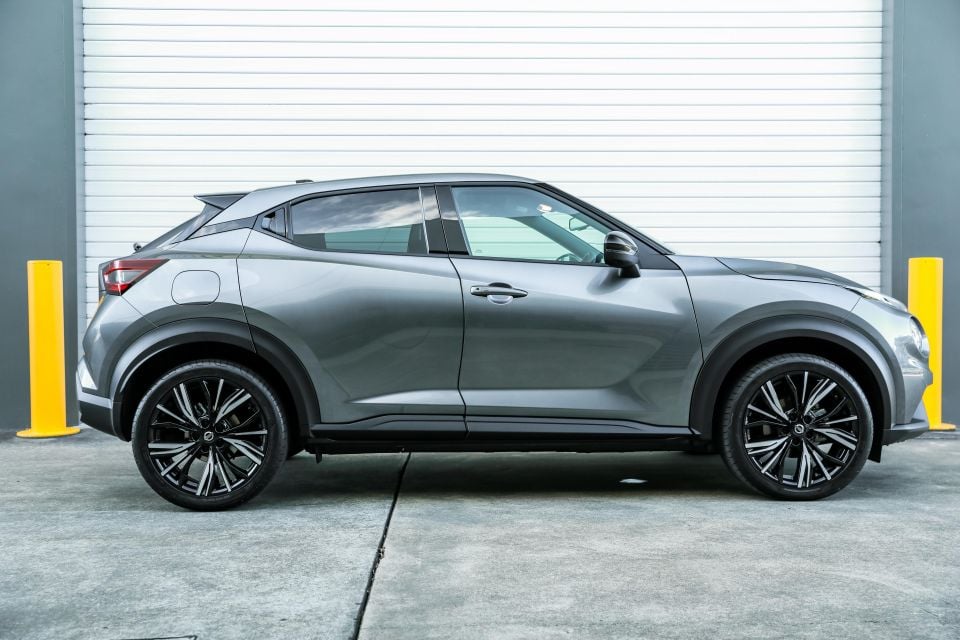
The Juke now uses the new CMF-B platform, first introduced in the upcoming Renault Clio (not coming here) and redesigned Captur (coming here soon). We’re one of the few markets outside Europe to get the new Juke.
In contrast, the small Kicks SUV sold in other markets uses Nissan’s older V platform which underpinned the defunct Pulsar. On paper, it looks like we’ve gotten the better deal.
The second-generation model competes in a segment recently defined by VFACTS as the Light SUV segment, though its key rivals are arguably the Toyota C-HR, classified as a Small SUV, and the Ford Puma. All three use small-displacement turbocharged engines, each with extremely similar outputs.
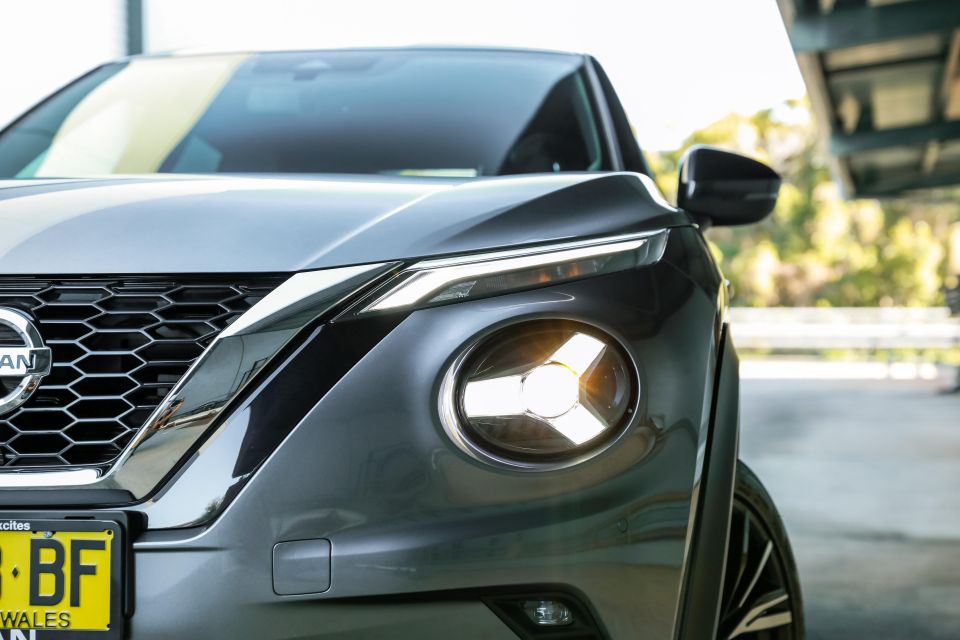

Visually, the Juke has grown up. The frog-like visage of the last generation has been replaced with a mature new face that ties it more closely to other Nissan SUVs like the next-generation X-Trail. It’s still identifiably a Juke, however, with unique details like the Y-shaped inserts in the headlights.
It looks sensational. The old Juke was a polarising thing but it was brimming with character. The new generation is 35mm wider and has this wonderful low, wide, squat stance to it, making it look much more aggressive and sporty – from bullfrog to bulldog. For our money though, the ST-L’s 19-inch alloys are nicer-looking than the TI’s, which look a tad aftermarket.
The Juke range opens with the base ST at $27,990 before on-road costs, rises through mid-range ST+ and ST-L variants, and tops out with the Ti featured here, priced at $36,490 before on-road costs.
Nissan is currently offering the Juke Ti at $39,490 drive-away.
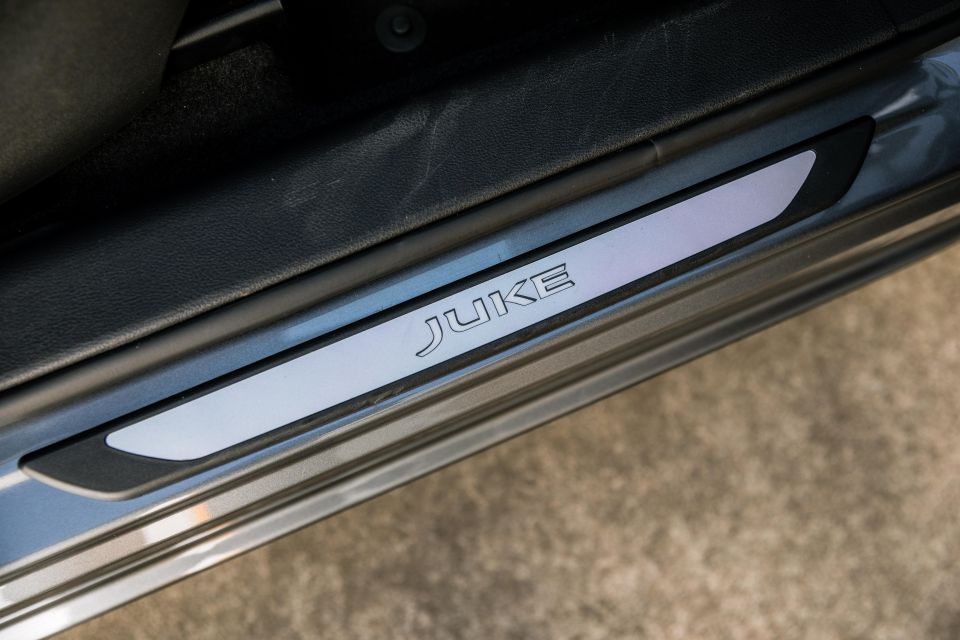
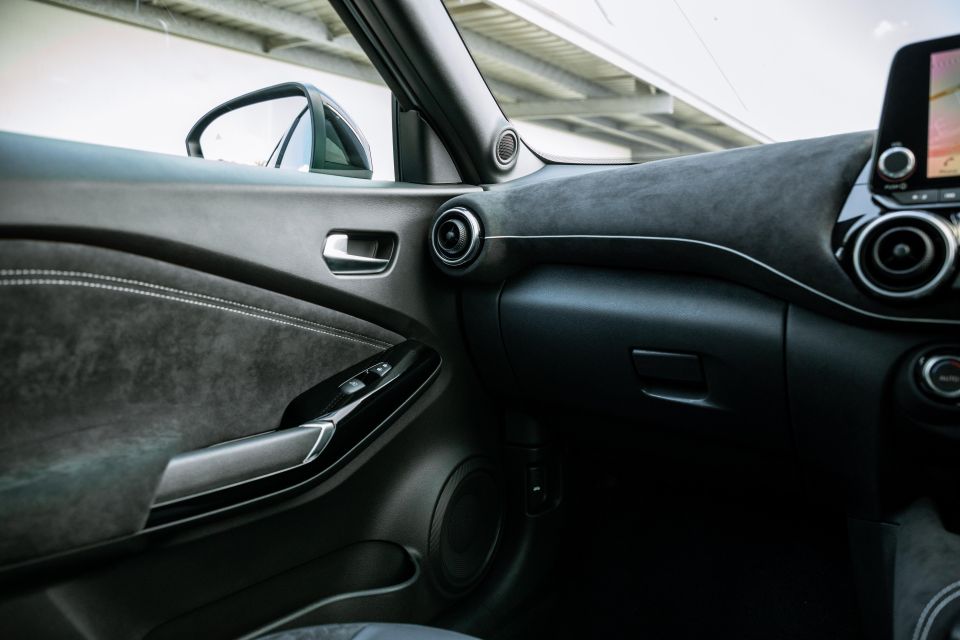
Buy your new car without the stress. It's fast, simple and completely free.

Great service from Travis and team, second time I have used this business would not hesitate to recommend them to anyone
Craig C.
Purchased a Ford Ranger in Sunshine Coast, QLD
CarExpert helped Craig save thousands on his Ford Ranger, now let us save you on your next new car.
Find a dealAs the flagship model in the Juke range, the Ti adds some extra luxuries like Alcantara trim on the doors and dash, illuminated sill plates, quilted leather upholstery, and an eight-speaker Bose premium sound system.
Those features are nice, particularly the impressive sound system, but it’s not as though other Jukes are left wanting for features. All models feature an 8.0-inch touchscreen infotainment system with Android Auto and Apple CarPlay, as well as a reversing camera with rear parking sensors, and automatic LED headlights with adaptive high-beam.
The ST+ adds satellite navigation, heated front seats and front parking sensors, while the ST-L adds ambient lighting, partial leather upholstery, a leather-wrapped steering wheel and shifter, proximity entry with push-button start, adaptive cruise control, a surround-view camera, a larger 7.0-inch digital instrument cluster display, an electric parking brake, rain-sensing wipers and 19-inch alloy wheels.
The ST-L also features leatherette trim on the doors and dash. While its sound system isn’t as good as the Ti’s Bose unit, it’s more than acceptable for the class. At $2559 cheaper than the Ti, it’s arguably the better deal unless you’re a devoted audiophile.
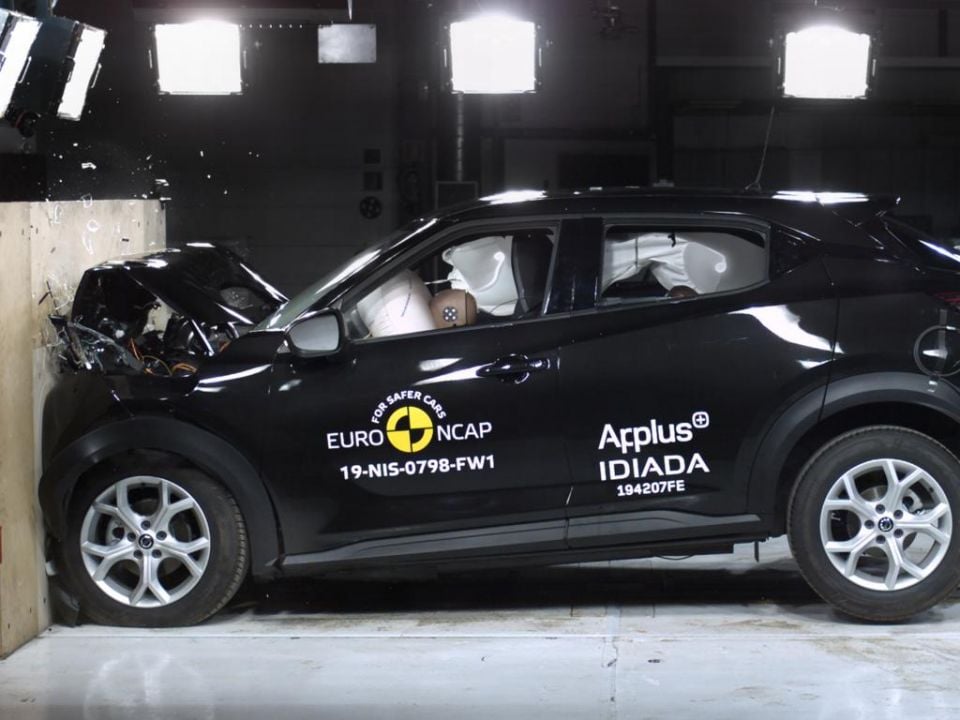
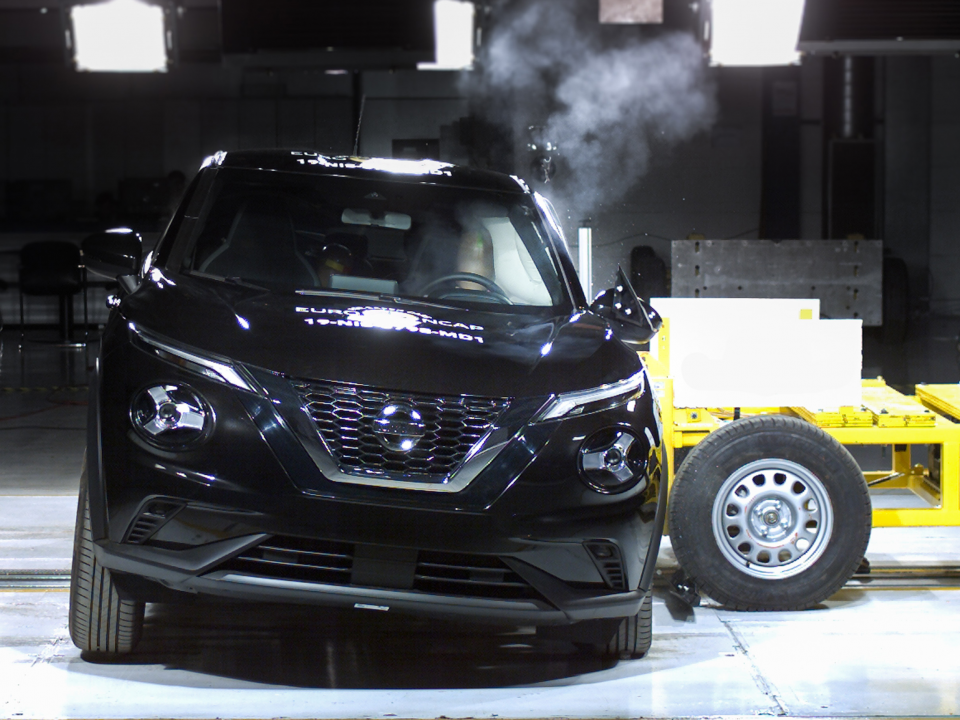
ANCAP awarded it a five-star rating with 2019 date stamp, based on scores of 94 per cent for adult occupant protection, 87 per cent for child occupant protection, 81 per cent for vulnerable road user protection, and 71 per cent for safety assist.
All 2020 Nissan Juke models come standard with autonomous emergency braking with pedestrian and cyclist detection, as well as lane-departure warning, traffic sign recognition, blind-spot monitoring, rear cross-traffic alert, and front, front-side and curtain airbags.
It also features Nissan’s Intelligent Lane Intervention, which applies the brakes if the car leaves a lane. That’s in contrast to the lane-keeping assist system used by other companies like Hyundai, which adjust the steering to keep you in your lane. Frankly, those systems tend to work better.
The Juke’s AEB system (“Intelligent Emergency Braking”) works at speeds of up to 60km/h, though the detection itself works at speeds of up to 80km/h. In its report, ANCAP said, “Tests of the AEB system showed good performance with collisions avoided or mitigated in most test scenarios”.
“Tests of the LSS [lane assist system] functionality showed good performance in lane keep assist tests, however the system does not intervene in more critical emergency lane keeping scenarios and overall performance was classified as adequate.”
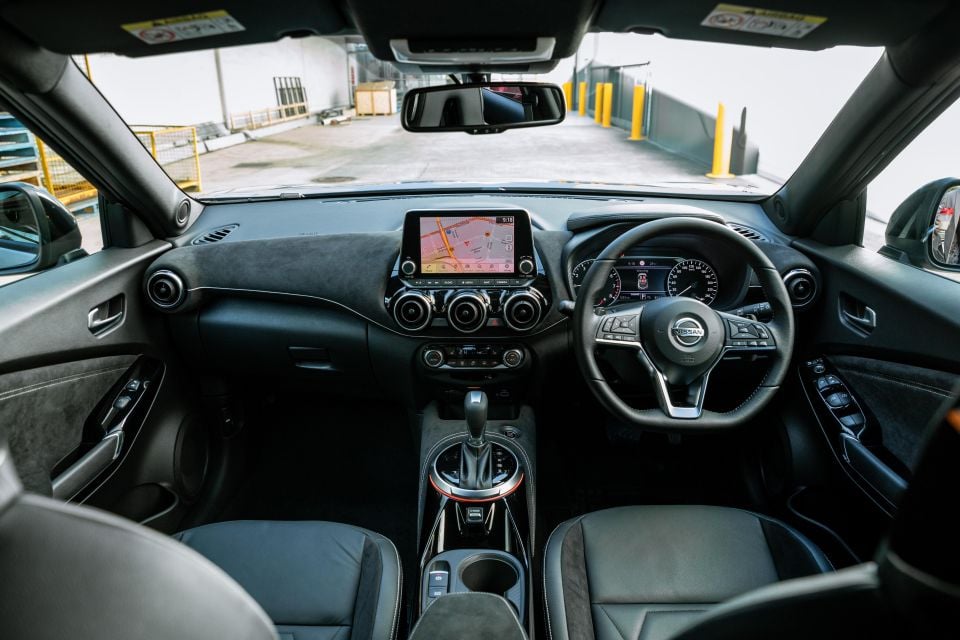
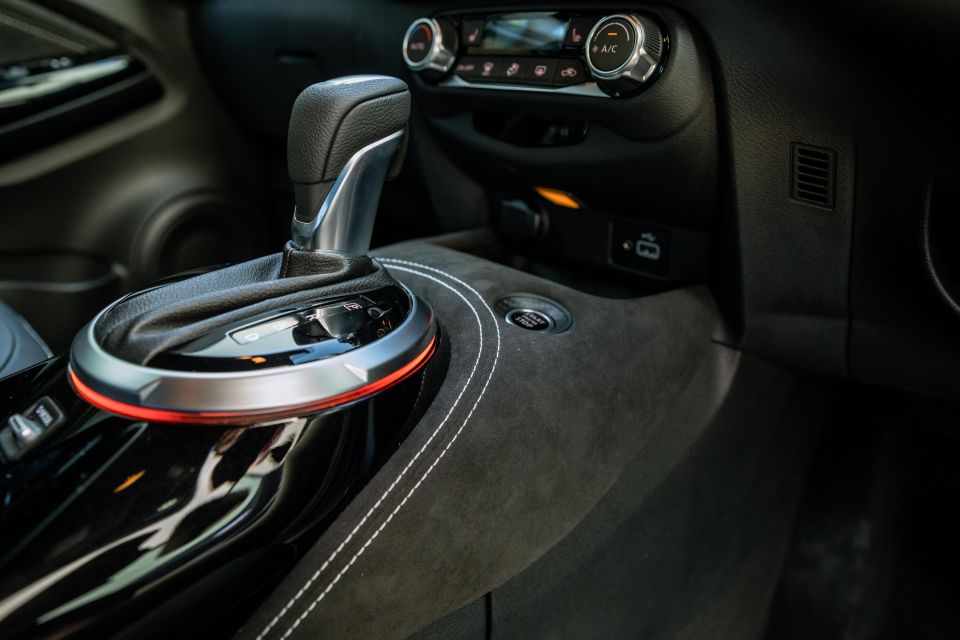
The Juke is one of the pricier options in its segment but, fortunately, its interior quality reflects that.
Each Juke trim level has a different piece of upholstery across the dash. ST-L models use leatherette, for example, which is also used on the centre console and the doors. The Ti swaps out the leatherette for Alcantara, something not commonly seen in this part of the market.
While the tops of the doors feature hard plastic, the dash top is soft to the touch. There’s orange ambient lighting in the front doors and around the shifter, which matches the orange backlighting of the switchgear. The latter seems to be a Nissan tradition dating back to the 350Z, but it’s at least easy to see at night.
The round air vents are distinctive and highly adjustable, and the smartphone tray at the base of the centre stack is backlit.
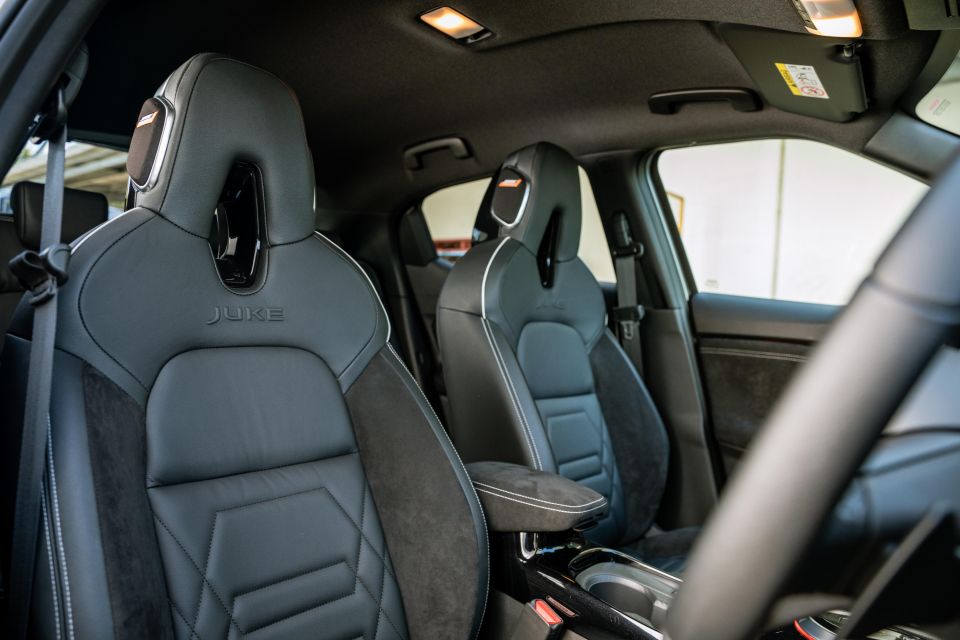
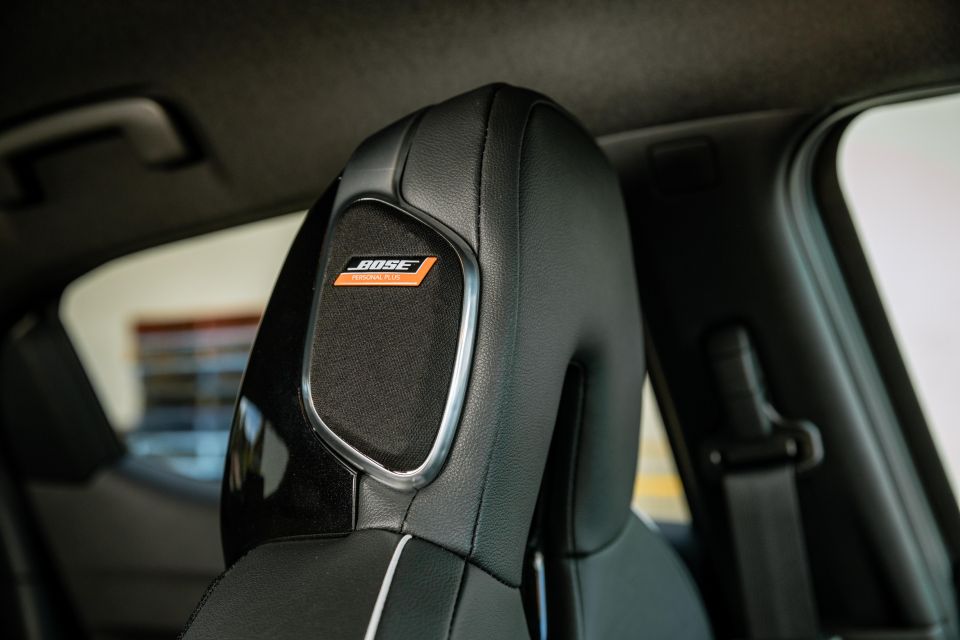
The front seats are comfortable, supportive and feature thick bolstering. We also like the funky quilted leather upholstery, though the lack of power assistance in the top-spec model is a curious omission.
There are speakers mounted in the front headrests, part of the eight-speaker Bose premium sound system. As far as small SUV sound systems go, this is right up there with that of the Kia Seltos GT-Line, which also happens to be a Bose system.
Nissan’s latest infotainment system far surpasses previous generation systems but it falls short of being class-leading. The interface looks a little bit cluttered and it’s not quite as intuitive as some rivals’ systems.
There’s a button on the steering wheel for voice commands but you’re limited in what you can command – it won’t work, for example, with the navigation. And over on the screen, streets sometimes don’t appear on the map, either.
You have to step all the way up to the Juke ST-L to get a leather-wrapped steering wheel and, while it isn’t as tactile as the one in the Volkswagen T-Cross and frankly doesn’t feel all that leathery, it’s still a nice, chunky wheel.
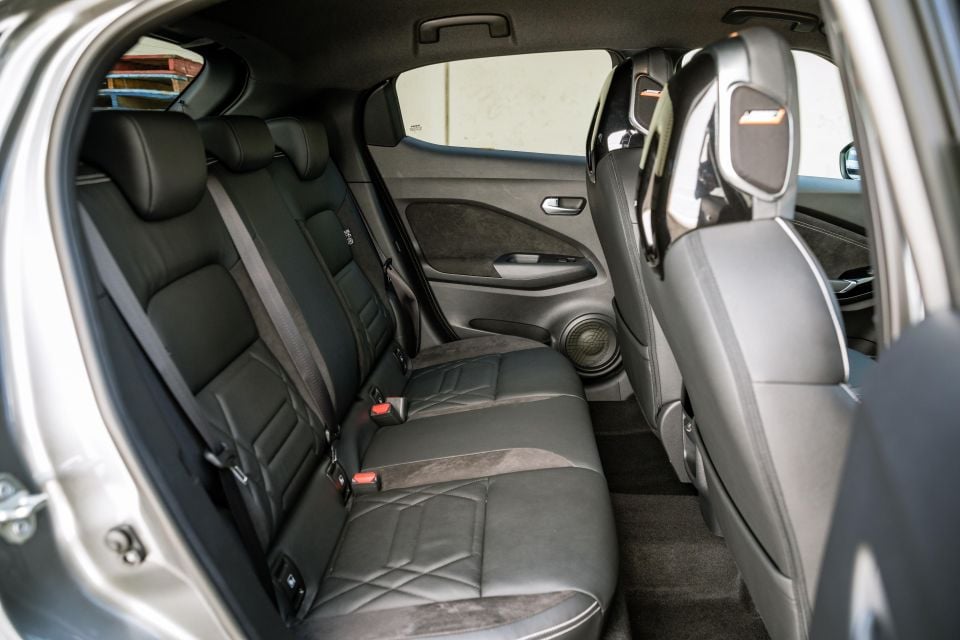
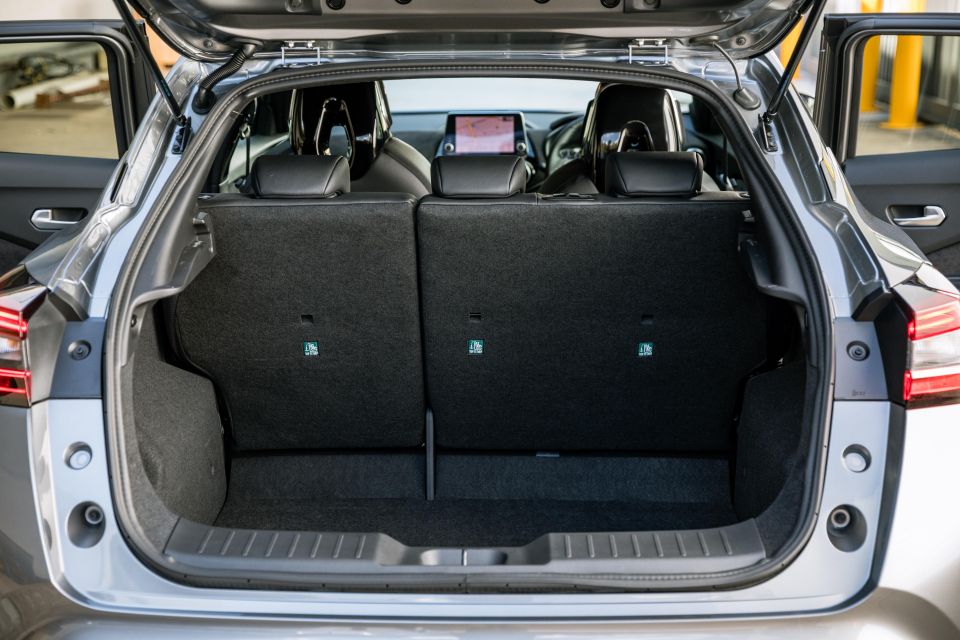
If you thought the Juke’s swoopy roofline would impact rear headroom, you might be surprised to learn it’s actually quite good. The bench is mounted quite low and there’s ample headroom for someone measuring 180cm, while legroom is also generous for such an occupant even if they’re sitting behind someone of a similar size.
As with many small SUVs, you probably won’t want to sit in the centre rear seat for too long. Despite this being front-wheel drive, there is a hump running through the centre of the cabin so any passenger back here will need to put their feet either side to be comfortable.
There are no rear vents but there’s a single USB outlet, while there are also two Isofix and top-tether anchor points for child seats.
Opening the tailgate, you’ll find a boot with 422L of cargo volume. It’s quite a deep boot, too, while underneath the floor is a space-saver spare. Fold down the rear seats and luggage space will expand to 1305L. These figures compare well with similarly-priced SUVs like the Toyota C-HR and Mitsubishi ASX.
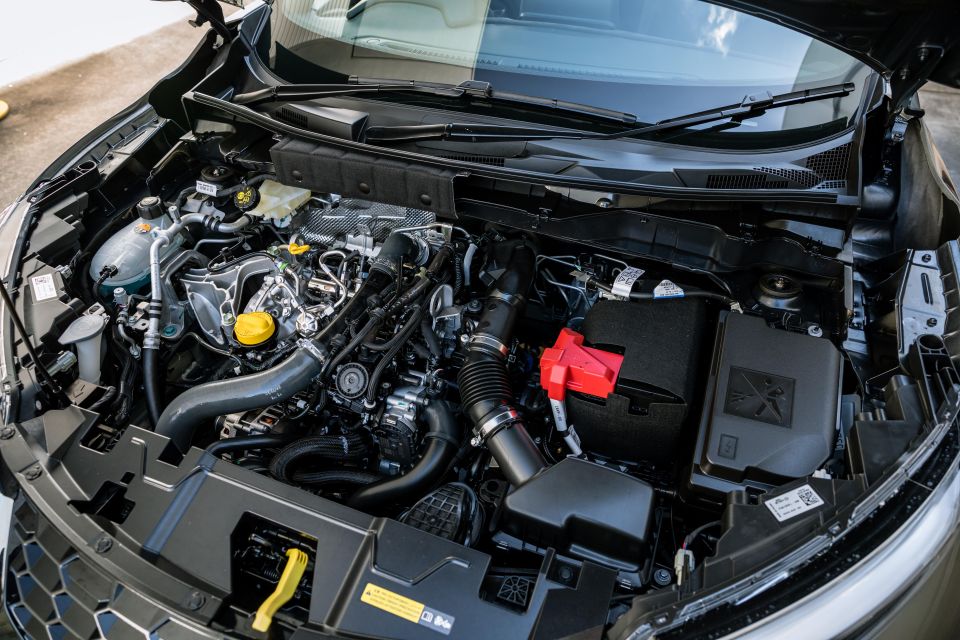
For now, all Jukes come exclusively with front-wheel drive and are powered by a turbocharged 1.0-litre three-cylinder engine. It produces 84kW of power and 180Nm of torque and is mated to a seven-speed dual-clutch automatic transmission.
Over a mix of city and highway driving, we recorded fuel economy of 6.7L/100km. Nissan claims an ADR combined figure of 5.8L/100km and requires you to use 95RON premium unleaded fuel.

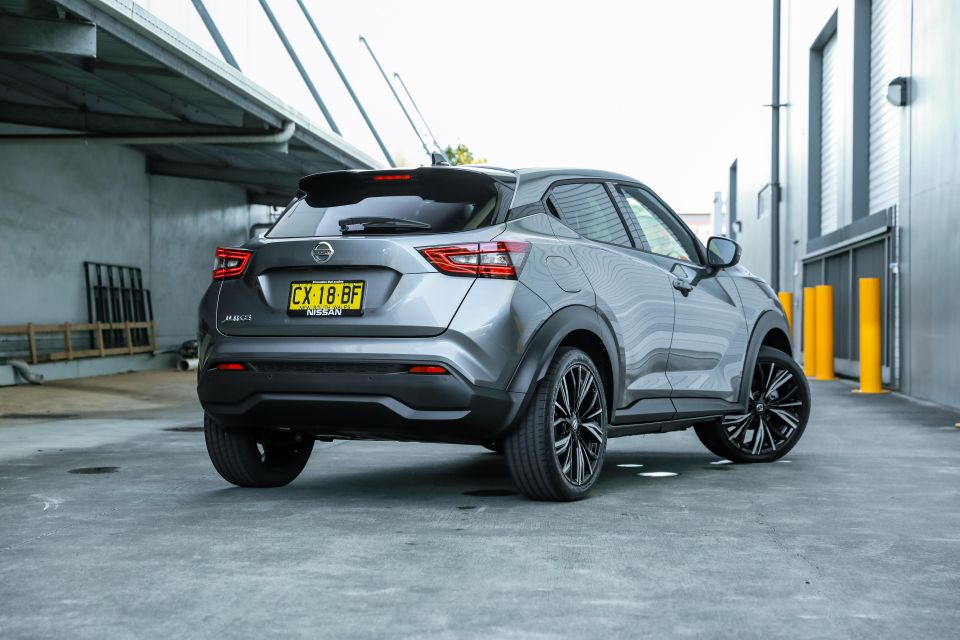
When we want to test a car’s handling mettle up here in Brisbane, there’s one place we always go: the twin peaks of Mount Glorious and Mount Nebo. It’s rarely a place you genuinely want to take a small SUV, though – the tight switchbacks and hairpin turns tend to exacerbate thier high centres of gravity and ample body roll.
The Juke is different, though. For a small SUV, the Juke doesn’t really drive like a small SUV. It’s something we actually willingly took to those twin peaks.
You sit relatively low in comfortable, well-bolstered front seats. Likewise, the centre of gravity feels lower than in other small SUVs like the Volkswagen T-Cross. That means there isn’t that tippy feeling you get in some SUVs, and also means body roll is well controlled.
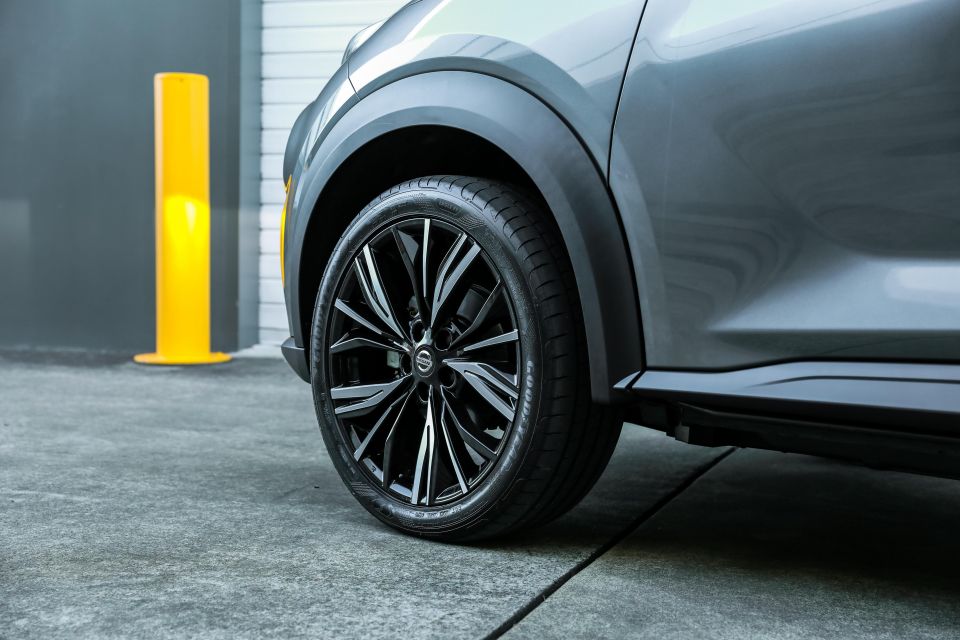
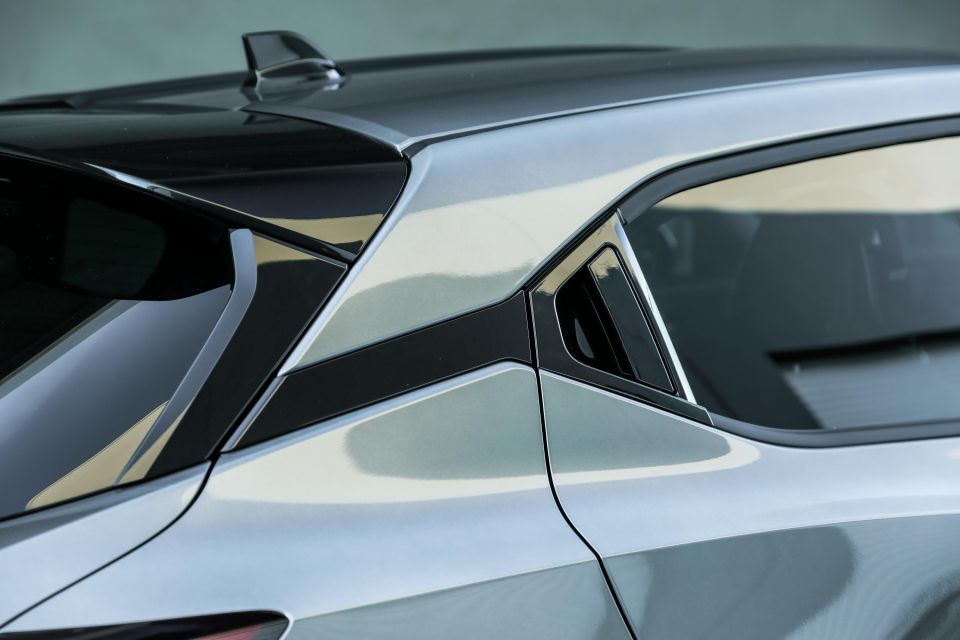
It actually proves quite enjoyable to drive. The steering is well-weighted and has a pleasing road feel. The ride is firm and poised though a little busy, and there’s some impact harshness over larger bumps and ruts. We’d wager the 17-inch wheels in the ST and ST+ would furnish a more pliant ride quality.
The Juke uses Nissan’s first dual-clutch automatic transmission and it shows. It has potential but it needs to go to finishing school, with the occasional rough shift, delay off the line, and vibration.
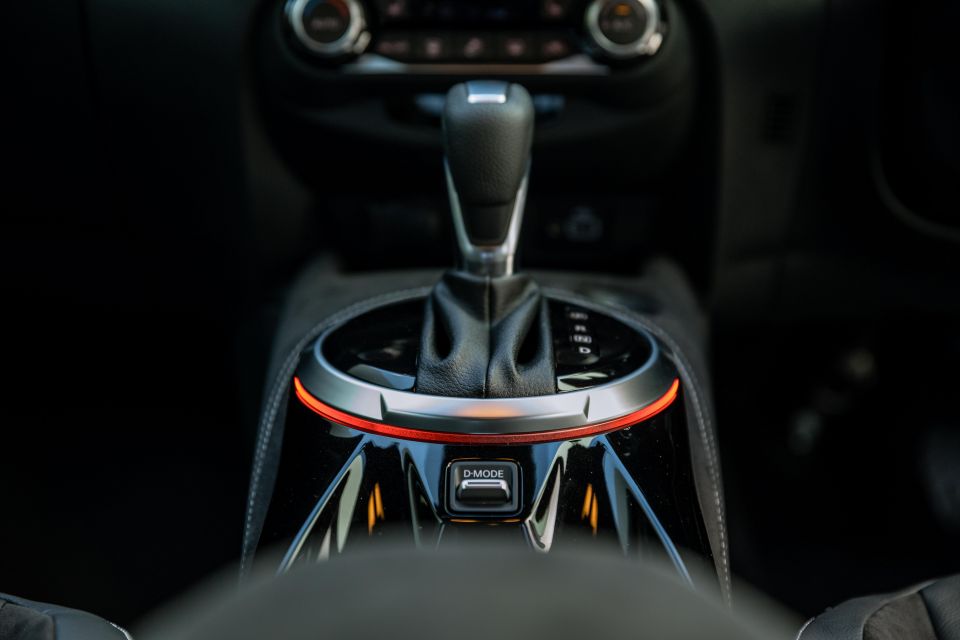
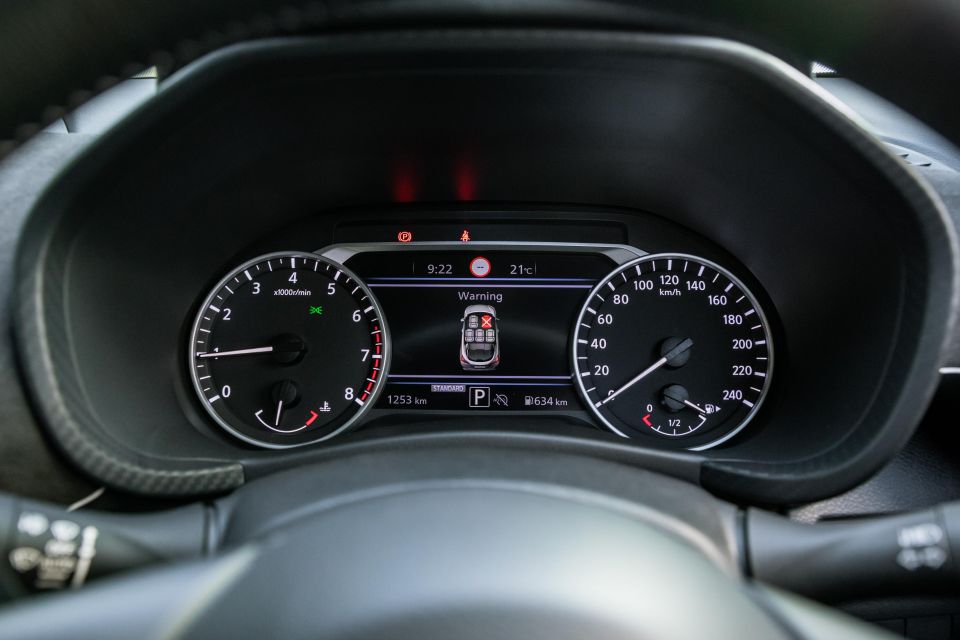
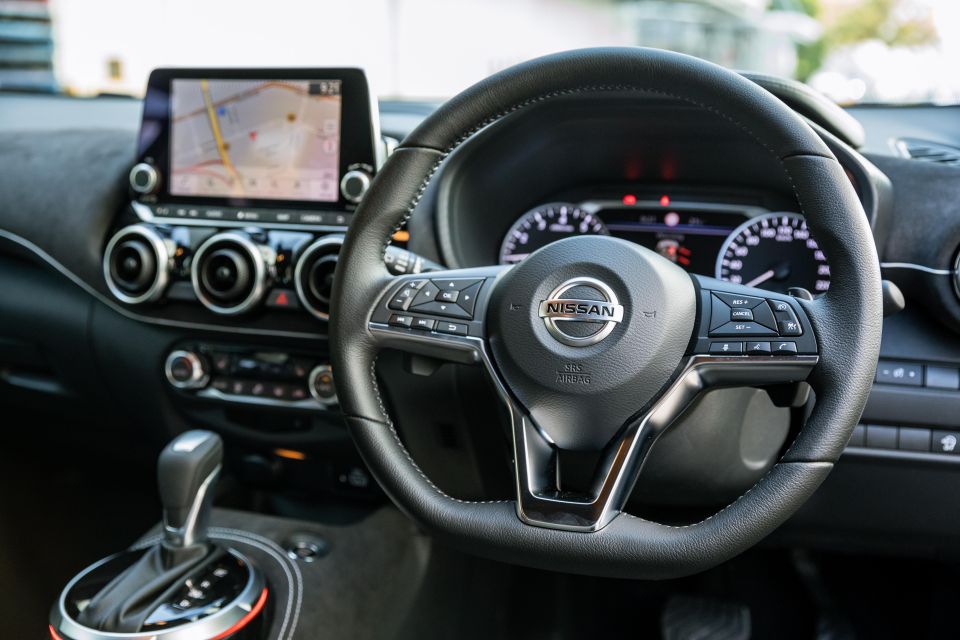
Sport mode doesn’t make a huge difference in the responsiveness of the vehicle, though you do have the option of manually shifting gears via the paddles behind the steering wheel.
It’s often said you should modify your driving style when switching to a dual-clutch – instead of burying your right foot to the floor at all times, you should ease off the line. That’s a bit of an ask, considering you don’t have to do that with a torque converter automatic to get the most out of it.
This playful little bulldog wants to run but the dual-clutch transmission is like a leash that’s holding it back. It’s a shame as this is a talented chassis that’s asking for some more power and a smoother transmission.
The Juke also requires more deportment. It’s a bit noisy and it’s plagued by a persistent issue: wind noise around the mirrors. It starts to make a racket at around 60km/h and doesn’t let up. The Juke sounds rough from start-up and never really lets up, though fortunately its stop/start system is relatively refined.
We experienced an issue on three separate occasions with the forward-collision warning and autonomous emergency braking while driving with the adaptive cruise control on, with the car braking itself in an empty lane.
Nissan Australia had the chance to inspect the Juke and reported it wasn’t running the latest software, and told CarExpert the vehicle has since been updated to fix the issue.


In addition to a five-year, unlimited-kilometre warranty, Nissan also offers a capped-price servicing program.
The Juke requires servicing every 12 months or 20,000km, with the first five services costing $310, $450, $520, $469 and $335 or $1189 in total. Those service intervals are quite long by class standards and the service pricing is comparable to the Volkswagen T-Cross, which has shorter intervals. You’ll pay less to service a Toyota C-HR, though – just $200 a pop.
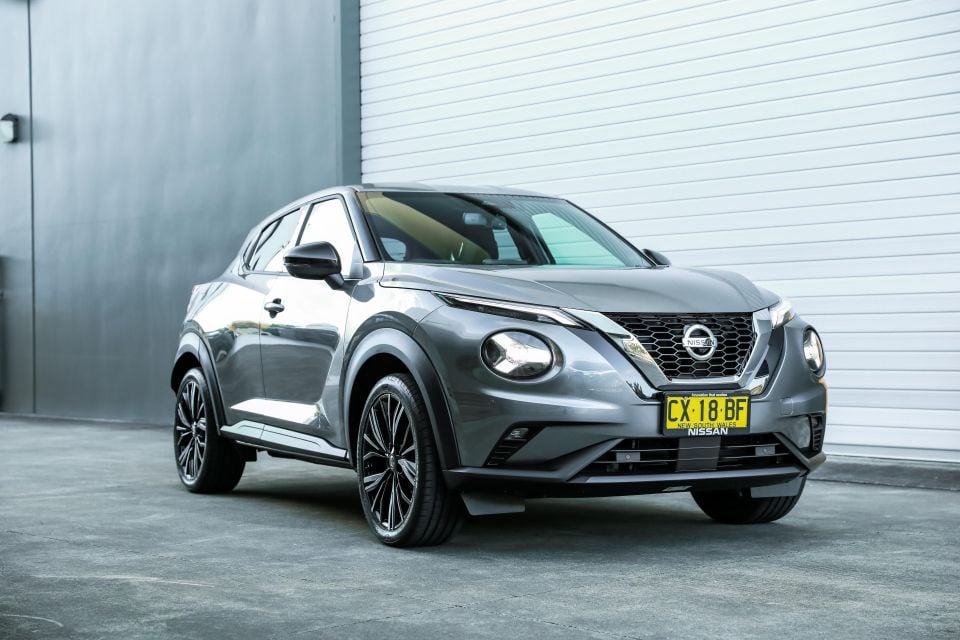
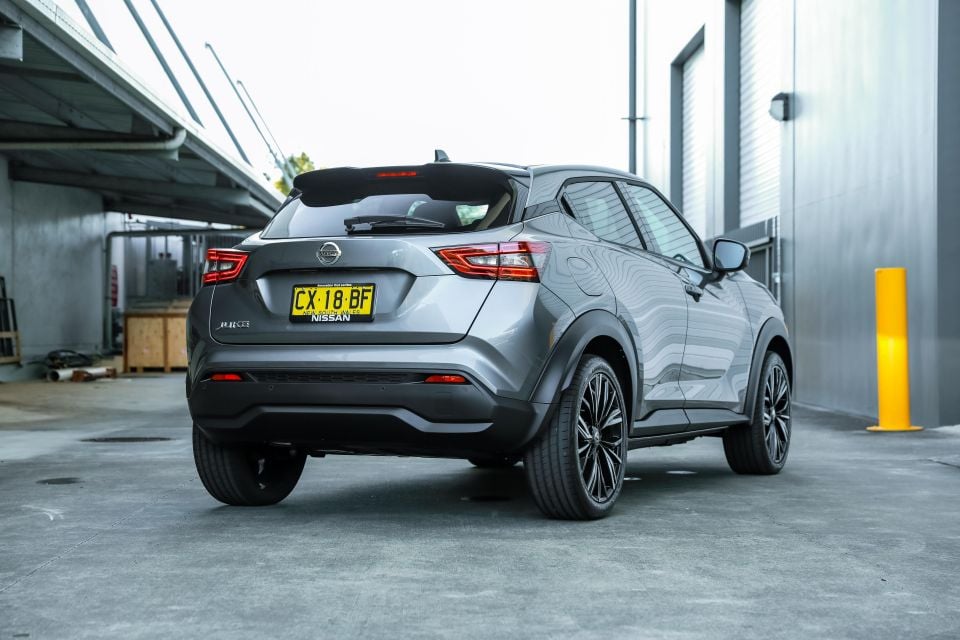
Where expert car reviews meet expert car buying – CarExpert gives you trusted advice, personalised service and real savings on your next new car.
The Juke is a scrappy little bulldog of a thing. That applies to its styling and its enthusiastic handling but also its lack of polish.
With some finessing of its transmission, ride quality and a reduction in noise, vibration and harshness, the Juke would be hard to fault. It’s brimming with character and it’s more fun-to-drive than most of its rivals, while its attractive if quirky styling belies its quite spacious and comfortable interior.
It has a lot of competition, though. At this price point, the Juke not only has light SUVs like the new Ford Puma and Volkswagen T-Cross to contend with, it’s also up against the conceptually similar Toyota C-HR. There are also more conventional SUVs like the Mitsubishi Eclipse Cross, not to mention fresh competition from the Kia Seltos and Mazda CX-30.
While those rivals may lack the Juke’s unique style, many of them offer a more refined package overall.
Where expert car reviews meet expert car buying – CarExpert gives you trusted advice, personalised service and real savings on your next new car.
William Stopford is an automotive journalist with a passion for mainstream cars, automotive history and overseas auto markets.


CarExpert.com.au
3 Days Ago


Damion Smy
3 Days Ago


Damion Smy
3 Days Ago


Josh Nevett
3 Days Ago


Max Davies
4 Days Ago


Ben Zachariah
4 Days Ago